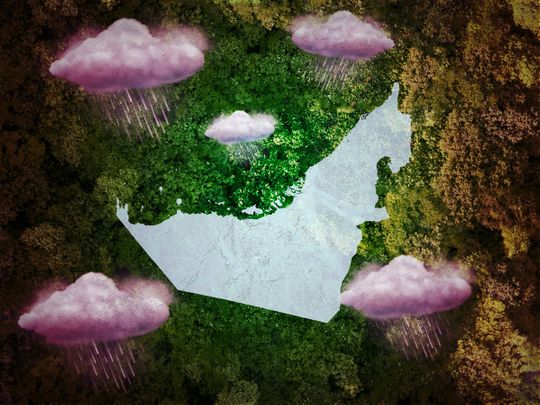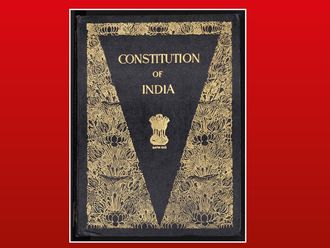
Environmental challenges loom large in our rapidly changing world, with the increasing issue of water scarcity posing a potential threat of escalating conflicts. The seriousness of the situation has prodded governments and many large establishments around the world to consider urgent measures to minimise the impact as they wrestle with the daunting task of bolstering their readiness.
In such a scenario, the UAE Research Program for Rain Enhancement Science (UAEREP) has emerged as a crucial player and a lucky exception.
Recently, the program obtained the “Future Fit” seal of endorsement by Ohood Al Roumi, Minister of State for Government Development and the Future in the UAE. This national recognition boosted the program’s standing and enhanced the country’s capabilities in advanced sciences and technology, reinforcing its reputation for excellence and leadership.
Accomplishing this mission was no easy feat. The UAEREP had to meet stringent criteria, demonstrating its commitment to benefiting society through research and innovation while staying people-centred and adaptable. The program’s core principles involve collaboration, data-driven decision-making, knowledge sharing, capacity building, socioeconomic impact, continuous engagement, and adaptive strategies.
Flexibility and adaptability
We also had to demonstrate our contributions to the national economy and society, tangibly promoting sustainable practices and employing proactive and innovative approaches. Flexibility and adaptability to future changes were key, achieved through strategies and initiatives that were clear, specific, progressive, and ensured measurable results. Importantly, the UAEREP actively contributed to the achievement of digital readiness, too, by adopting and developing advanced technologies for the future.
The journey was not without its challenges, especially considering that we had to pave our own path, which required us to build our novel research approach through funding and collaboration.
One of the key components of this approach is innovation, where the program actively seeks out interdisciplinary ideas and state-of-the-art technologies that can be applied to improve the efficiency and effectiveness of rain enhancement applications.
The UAEREP’s dedication to fostering technological advancements is evident in the progression of Technology Readiness Levels (TRL) for newly awarded projects, which reinforces the program’s position as a leader in addressing water security challenges through advanced and commercially viable technologies.
One of our inaugural cycle’s awarded projects carried out by a research team at Khalifa University successfully developed novel nanotechnology-based cloud seeding materials. The project has reached its final phase where we have practically incorporated the materials into regular cloud seeding operations by the UAE National Center of Meteorology (NCM). Now the focus is on local manufacturing and commercialisation.
Unique AI framework
Another example is a project entitled “Hybrid Machine Learning Framework for Enhanced Precipitation Nowcasting”, which was awarded recently in our fourth cycle. Led by the Scripps Institution of Oceanography’s at the University of California, San Diego, this project aims to deploy Artificial Intelligence (AI) to improve rainfall estimation and weather forecasts.
The unique AI framework integrates varied data sets from satellite platforms, weather radar, rain gauges, and numerical weather prediction models. The anticipated outcome of this project is an AI-based prediction (6-hourly) tool deployed at NCM to optimise cloud seeding mission timing and targeting in the UAE.
These projects showcase the UAEREP’s efforts in supporting a wide range of advanced solutions to address water challenges. Since the launch of the 5th Cycle in January, we received 96 pre-proposals from more than 400 researchers, scientists, and specialists in the field of weather modification affiliated with 216 research centers, universities, and public and private institutions in 35 countries.
This global reach is a testament to our program’s commitment to inclusivity and collaboration, enabling the involvement of varied expertise and perspectives from around the world. The type of research supported spans different aspects of rain enhancement science, with a focus on advancing cloud seeding technologies and methodologies.
“Future Fit” stamp of recognition
The National Center of Meteorology plays a vital role in supporting our research endeavours, providing essential local data support, research facilities, and the consolidation of research projects based on the outcomes of previous cycles. This real-life application of research outcomes directly contributes to the NCM’s ongoing cloud seeding operations, making the research efforts practical and impactful.
By actively investing in rain enhancement research through advanced technology and international partnerships, the UAE has become a critical player in the global rainfall enhancement ecosystem. Over the years, the UAEREP has provided $18 million in grants for research projects worldwide.
These ongoing efforts have played an important role in advancing our national water security, aligning with the UAE Water Security Strategy 2036. As research drives technological advancements in cloud seeding, we can anticipate an even greater contribution to overall rainfall volumes in the future.
As evident, cross-border collaboration and knowledge exchange among research institutions and scientific centers are critical in developing cloud-seeding technologies and methodologies. There is little wonder that the UAE has become a major global partner in rain enhancement and water security, serving as a platform for meaningful conversations, enabling research, and driving innovation.
With the UAE set to host COP28, the importance of initiatives like the UAEREP becomes clearer. The global summit provides an enormous opportunity for countries to come together and tackle pressing climate challenges, including water security. The UAEREP’s accomplishments and ongoing contributions will undoubtedly be highlighted during this event, serving as a model for other nations seeking to address similar challenges.
All this would not have been possible without the patronage of Sheikh Mansour bin Zayed, UAE Vice President, Deputy Prime Minister and Minister of Presidential Court, and our leadership. I would also like to express my gratitude to our stakeholders and strategic advisers, as well as the National Center of Meteorology, who made invaluable contributions to our effort to ensure a sustainable and resilient future.
The “Future Fit” stamp of recognition is a chance for us to reflect on our work in recent years, as we reaffirm our commitment to creating a water-secure world for generations to come. UAEREP’s success story stands as a testament to the power of collaboration, innovation, and technology in addressing global water challenges. Together, with continued support and united efforts, we can ensure a world that we collectively envision.
Alya Al Mazroui, Director of the UAE Research Program for Rain Enhancement Science (UAEREP)









